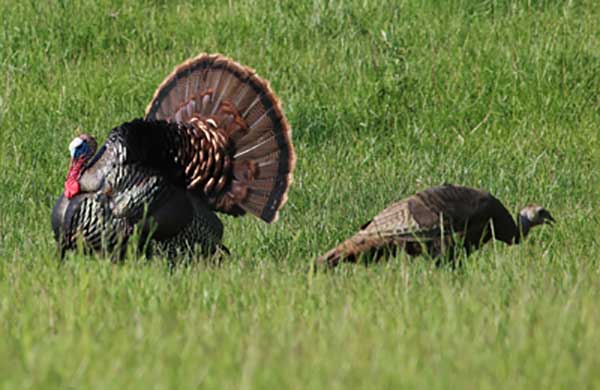By Louie Stout
 Spring Turkey Harvest Continues to Drop
Spring Turkey Harvest Continues to Drop
Last spring’s turkey hunting season produced another drop in harvest numbers around the state.
According to Indiana DNR turkey biologist Steve Backs (South Bend native), the statewide harvest was down 13 percent from 2017 and fell in 65 of the 92 Indiana counties. In northern Indiana, Steuben and Marshall counties ranked among the top 10 in harvest numbers.
Backs said all regions had proportional decreases ranging from 6 percent in northern counties to 25 percent in south central counties.
In Michiana, St. Joseph County hunters killed 190 gobblers, a 2 percent increase.
Marshall County took 303 birds, a 12 percent decrease; Elkhart County had 199 birds taken, down 9 percent; Kosciusko County was down 5 percent with 244 turkeys harvested; and LaPorte dropped 7 percent with 204 birds killed last spring.
The statewide harvest has fallen steadily from Indiana’s all-time high of 13,742 birds in 2010.
Despite the decline, more than 72,000 hunters bought turkey permits but only 19 percent of them were successful last spring.
A very wet and cold spring didn’t help hunting efforts, but Backs says the fall off in harvest is the new norm.
“The decline is likely caused by the annual fluctuations and generally lower long-term production trends that are below the levels we observed earlier in the restoration era,” he noted in his 2018 survey. “This decline also has occurred throughout the eastern U.S. The greatest declines in Indiana have occurred in the southern part of the state where the restoration project was completed before the northern part of the state.”
Turkeys were first re-established in 1970 in four southern Indiana counties.
Backs survey shows that 47 percent of the gobblers taken last spring were 3-year-olds or older. The 10 year average is 32 percent. Two-year-olds accounted for 38 percent, some 10 percent below the average.
“The low proportion of juveniles in the 2017 and 2018 spring harvest raises some concern,” Backs added. “The age structures would suggest progressively fewer 2-year-old gobblers in subsequent spring harvests with a lower proportion of them than the current 10-year average of 48 percent.”
Devout turkey hunters won’t be discouraged. It just means you’re going to have to scout more and hunt wiser to kill a trophy gobbler next spring.
In the meantime, Backs is looking for help in a statewide survey of wild turkey broods. If you see young turkeys this summer, go to the DNR website www.in.gov/dnr/fishwild/8641.htm and fill out a form to report your sightings. He wants to know how many hens and or poults you see and the county in which they were seen.
“Hens without poults are just as important to our data,” Backs said.


